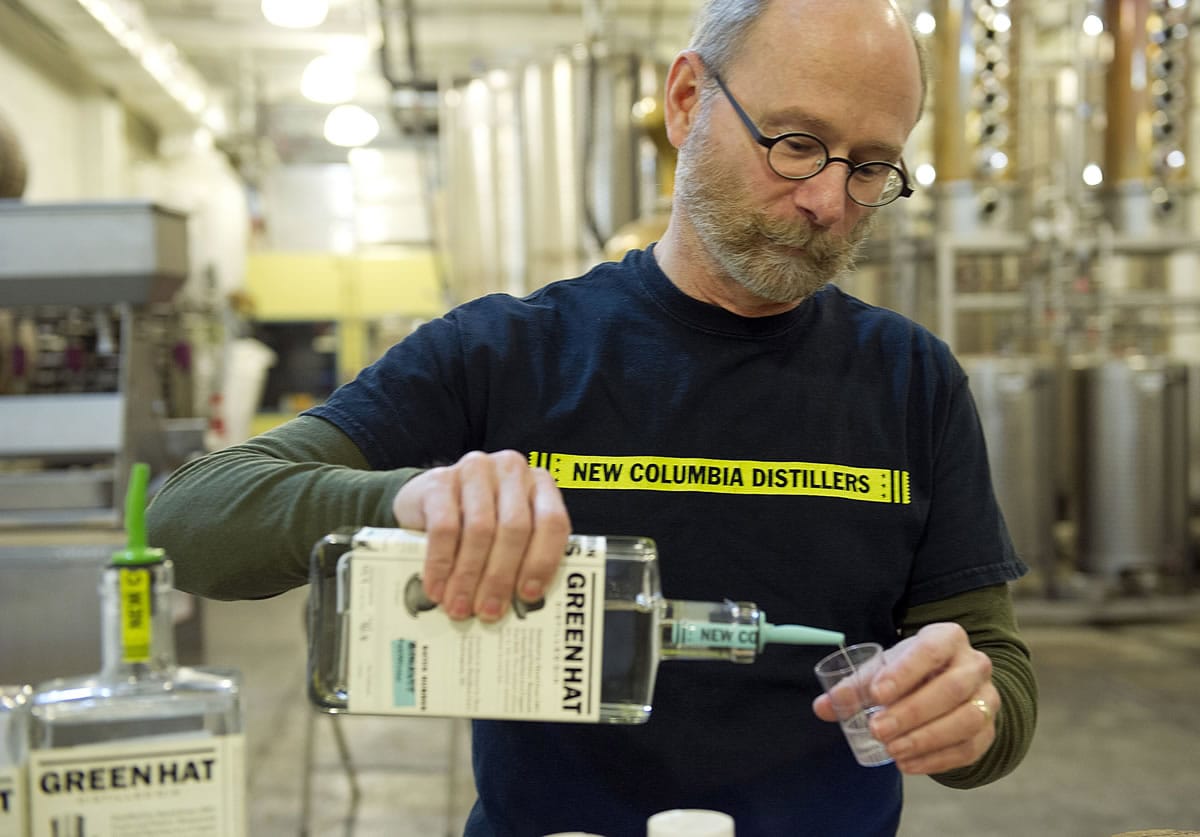WASHINGTON —Consumers increasingly are enjoying locally made spirits as a new generation embraces drinks made from recipes dating to the days of Prohibition.
The craft distilled-spirits business is taking off all over the country — often with tours and tasting rooms — in urban and suburban areas from Washington, D.C., to North Carolina, Texas, California and Washington, where Seattle is something of a ground zero for the market’s explosive growth.
In an industrial area of northeast Washington, D.C., the city’s only distillery, New Columbia Distillers, is in a converted car-storage space. Open only two years, it’s already about to get competition from a new distillery around the corner.
“We’re the first in a hundred years,” co-owner and distiller Michael Lowe, 65, said of his new D.C. venture.
He joined forces with his son-in-law, John Uselton, 41, and together they make rye whiskey and several gins under the Green Hat Gin label, named in honor of the bootlegger who provided Congress with illegal booze during Prohibition and always wore a green fedora.
A retired lawyer, Lowe looked into being a distiller because “I got bored being retired.” And now? “It’s a lot of fun.”
The two started off studying the field, and after an apprenticeship, started making gin, which doesn’t have to age. They’re now also making whiskey, which needs to age in barrels for several years. The high-end products range from $36 to $39 for a 750-milliliter bottle, and Lowe said the business is already profitable.
Uselton said the local angle drew people to their tastings. “People want to be a part of something,” he said.
Bar manager Brenden Mulder-Rosi, 32, has been buying the gin for the nearby Boundary Road restaurant since the distillery opened. “Since day one, we’ve been super fans,” he said. “I think the old locavore works really well for distilling. But above all, it really is a question of taste.”
It’s mainly millennials who are driving the boom, as they discover the range of spirits and a bit of the romance of Prohibition, the period from 1920 to 1933 when the U.S. Constitution banned alcoholic beverages but people found ways around it.
Troy Turner, a co-founder and the chief operating officer of Seattle’s Tatoosh Distillery, which makes bourbon whiskey and rye whiskey, said, “All the recipes I have are from my great-great-grandfather in Louisiana. Now I’m doing it legally.”
Asked about the quality of craft spirits, Esquire magazine’s Drinks columnist, David Wondrich, said, “It varies so widely, it’s amazing.” He sees the appeal of the way the products are made: “It’s local, it’s artisanal.”
And it’s struck a chord in the last few years.
Frank Coleman, spokesman for the Distilled Spirits Council of the United States, said that when he’d started at the trade association in the early 2000s, there were only a handful of craft distilleries. “There are now over 650,” he said. “We’re in the middle of a whiskey renaissance.”
The mechanics of the still are the same as 100 years ago: The grains — corn, rye or wheat, depending on the product — are ground, mixed with water, fermented and then put in the distiller to separate the alcohol and water.



